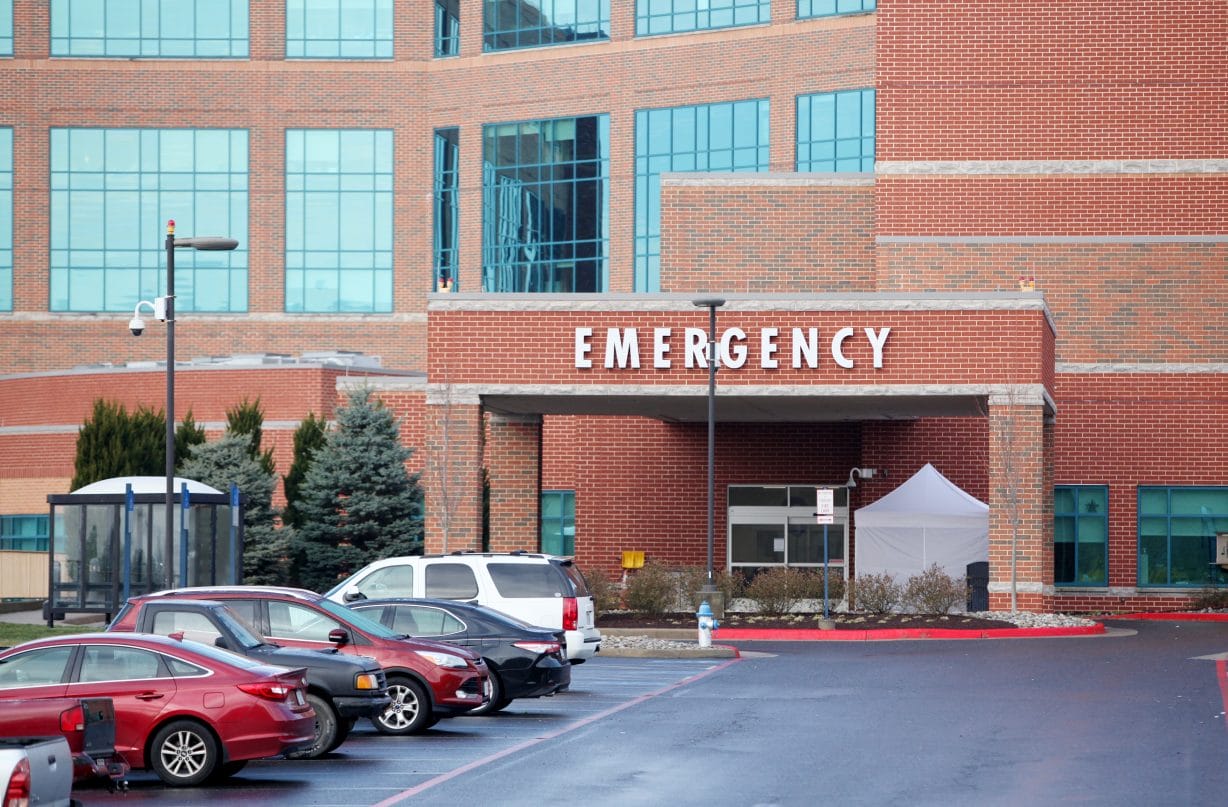
By Stephanie Spernak, contributor
When Doug Moyer, president and CEO of Sentara RMH, unveiled the medical center’s new COVID-19 hospitalization dashboard at a rare press conference Monday, he made an urgent plea to the community to get vaccinated and keep down the number of COVID-19 patients.
The dashboard, which reports some hospital occupancy data, shows some key numbers, but it’s not as extensive as the data Sentara RMH has to report to the U.S. Department of Health and Human Services.
It contains two measures intended to capture the effect of COVID-19 inpatient admission. The first number is “Confirmed COVID-19 inpatients.”
Alyssa Pacheco, a Sentara spokesperson, told The Citizen that figure refers to “the number of individuals in the hospital receiving care who are COVID positive,” but it doesn’t specify whether those are patients treated specifically for COVID-19 or whether it also includes patients with unrelated medical needs who happened to have tested positive for COVID-19.
The second data point on the dashboard covers the percentage of total patients staying in the hospital with COVID-19 as compared to those admitted for non-COVID related reasons, such as broken bones or heart attacks. The larger the percentage of COVID-19 inpatients, the greater burden of care they present to the doctors, nurses and health care staff — a point Moyer and his team underscored repeatedly Monday.
“We recognize the fear of health care worker burnout,” Moyer said. “There is a limit to how much we can keep asking of the same group of health care heroes to take on.”
Moyer said Monday that publicly accessible COVID-19 data is essential now because hospital inpatient and Intensive Care Unit (ICU) beds can “unexpectedly and quickly fill up during a case surge, with negative impact on medical care for the entire community.”
Availability of ICU beds — reserved for patients with the greatest health needs — is a critical component of hospital capacity. Sentara’s dashboard doesn’t break out ICU beds, specifically.
Pacheco said both numbers on the dashboard include ICU beds as part of the total inpatient beds. But when asked why ICU beds were not broken out the way Sentara does in its report to the federal government, Pacheco said “capacity is ever-changing.”
“Numbers only represent a snapshot in time,” she said.
Since the dashboard’s launch Monday, Pacheco said “the (community) feedback we have received so far has been very positive, and people appreciate the transparency of data. The dashboard provides a daily snapshot of what is happening in the community.”
She said community inquiries were “primarily around the number of (COVID-19) patients we are seeing, which is why we are pleased to be able to offer that type of information more readily for those who are interested via the dashboard.”
Before December 2020, hospital occupancy data wasn’t available to the public. Hospitals reported this information to local and state health departments and to federal agencies such as the Centers for Disease Control (CDC) and the Department of Health and Human Services. Some data was available by state or regional levels, but not broken down by individual hospitals. Once the COVID-19 pandemic began, however, public health and safety experts convinced federal officials to release hospital-level occupancy data to help with pandemic planning and preparation efforts.
Hospitals report to the HHS with seven-day rolling averages, considering the dynamic nature of people getting admitted and discharged. Sentara RMH’s most recent report to HHS, for the week of Sept. 3-9, showed total staffed ICU beds available at the facility was 32. That makes up about 20% of its staffed inpatient beds during that span.
Of the 32 ICU beds, 10 were occupied during that period. Six patients out of the 10 were confirmed or suspected COVID-19 patients, according to the report.
During the Monday press conference, Dr. Russ Ford, an infectious disease specialist at Sentara RMH, said the hospital is “running at approximately 85% capacity.”
According to hospital management experts, hospitals typically operate close to capacity without difficulties. Managing hospital capacity during a pandemic characterized by repeated and unpredictable surges and fall off in patient numbers is clearly a far more challenging task.
When asked what steps the hospital was taking now to address a possible COVID-19 surge risk in the fall, Pacheco said Sentara Health Care was monitoring hospital capacity across all 12 of its acute care facilities in Virginia and North Carolina to coordinate staffing and other resources as needed.
Moyer urged the community to get vaccinated to protect themselves and prevent spreading the disease to others in their community and those who require care for reasons unrelated to COVID-19 and to ease the pressure on staff members who have been working long hours at a fast pace since the pandemic began.
“Our employees are fatigued, Moyer said. “Our community is seeing a surge in COVID cases and hospitalizations but we have never seen it go away. It has been an all-hands-on deck effort now for over a year and a half. Until we get everyone in our community vaccinated, we won’t get a break.”
Journalism is changing, and that’s why The Citizen is here. We’re independent. We’re local. We pay our contributors, and the money you give goes directly to the reporting. No overhead. No printing costs. Just facts, stories and context. We’re also a proud member of the Virginia Press Association. Thanks for your support.

